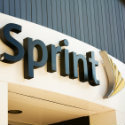
Sprint has been testing taking its network to the skies with a small cell on a drone, aimed at extending the reach of its 2.5GHz 4G network.
The operator said Tuesday the "aerial small cell" can extend the range of its 2.5GHz 4G LTE network up to ten square miles, in initial tests in Midlothian, Texas, outside of Dallas. The device uses the Magic Box small cell from Airspan Networks Inc. (Nasdaq: AIRN), mounted on a drone from CyPhy Works. Like the Magic Box already deployed by Sprint Corp. (NYSE: S), the small cell can connect to subscriber devices and a nearby cellsite or cell-on-wheels (COW) -- up to six miles away in this case -- Sprint says, delivering both customer connectivity and wireless backhaul over the air. (See Sprint's Next Trick? They Call It a 'Magic Box' for more on the small cell.)
What might have seemed like an interesting experiment gains sharper focus in light of the recent hurricanes -- Harvey, Irma and Maria -- blasting parts of the US, Puerto Rico and other American territories. Puerto Rico has suffered cell service outage, adding to the burden of residents already suffering from the disaster. Sprint says that the flying small cell -- in conjunction with mobile COWs -- could be used to provide a "flying data service" in hard-to-reach areas after an emergency. (See 2017 Storms May Mean Network Rethink.)
It could also handle more mundane tasks, such as adding capacity for the big game at a stadium or high-trafficked urban areas.
See this video from Sprint for more:
Sprint isn't the first tech player to consider airborne wireless platforms by any means. Google (Nasdaq: GOOG) has its Loon balloons, and Facebook is testing solar drones, and more. The Sprint flying Magic Box, however, is much closer to the ground than near-space alternatives being explored by Facebook and Google.
— Dan Jones, Mobile Editor, Light Reading
About the Author(s)
You May Also Like












